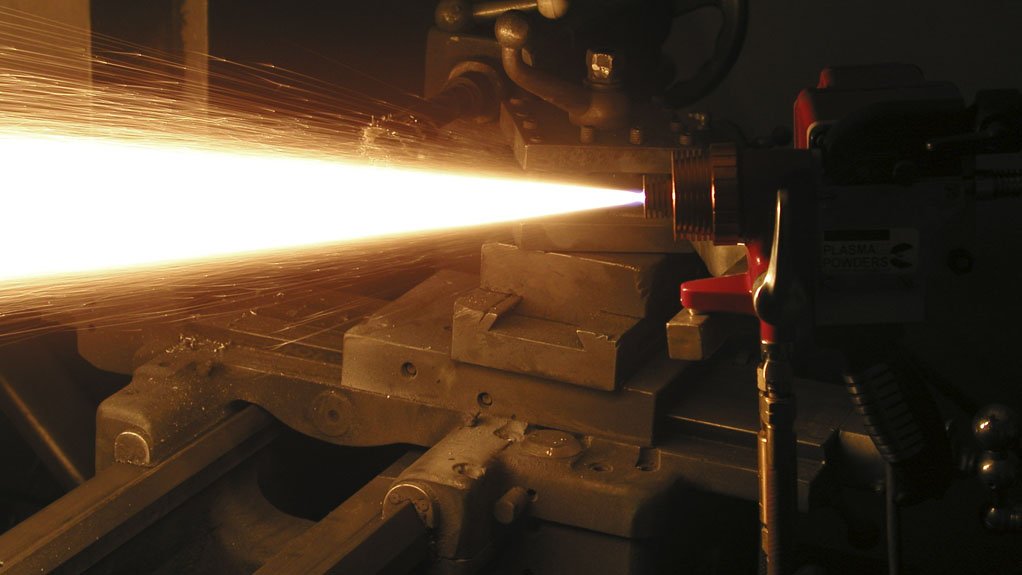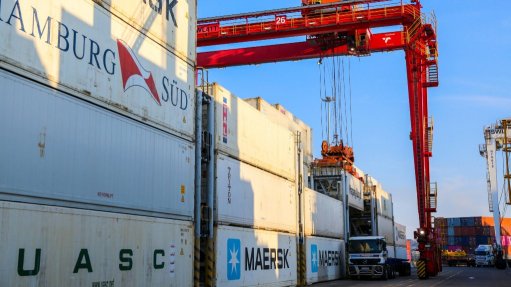Thermal spray coatings provide protection for refineries


PROTECTIVE LAYER Coatings produced with thermal spraying are formed when millions of particles are deposited on top of each other and are bonded to the substrate
Thermal spray coatings can produce significant cost savings for refineries by reducing the amount of piping maintenance required to guard against the consequences of corrosion under insulation (CUI), says wear solutions provider Weartech director Adam Wintle.
He explains that CUI – a common problem shared by the refining, petrochemicals, power, industrial, onshore and offshore industries – is difficult to detect because of the insulation cover on the pipe, which masks the corrosion problem until it is too late.
“The problem occurs on carbon steels and 300 series stainless steels. On carbon steels it manifests as generalised or localised wall loss, while with the stainless pipes it is often pitting and corrosion induced stress corrosion cracking.”
Though failure can occur in a broad band of temperatures, Wintle notes that corrosion becomes a significant concern in steel at temperatures between 0 ºC and 149 ºC and is most severe at about 93 ºC. Corrosion and corrosion induced stress corrosion cracking rarely occur when operating temperatures are constant above 149 ºC. CUI is caused by the ingress of water into the insulation, which traps the water like a sponge in contact with the metal surface. The water can come from rain water, leakage, deluge system water, wash water, or sweating from temperature cycling or low temperature operation such as refrigeration units.
“The results of CUI are costly and can account for as much as 40% to 60% of a company’s piping maintenance costs. In addition, CUI can result in costly repairs and lead to significant downtime.”
Wintle highlights that the CUI prevention philosophy of many large petrochemicals companies has been an inspection-free, maintenance-free concept, and insulated systems, particularly piping systems, are simply expected to have a service life of 25 to 30 years.
Evaluation of life cycle savings has, however, led to consideration of new, simple approaches to preventing CUI.
“All thermal spraying processes rely on the same principle of heating a feedstock, accelerating it to a high velocity and then allowing the particles to strike the substrate. The particles will deform and freeze onto the substrate. The coating is formed when millions of particles are deposited on top of each other. With thermal spray aluminium (TSA), these particles are bonded to the substrate mechanically, providing a protective covering.”
Wintle notes that the first step of any coating process is surface preparation. This is done by cleaning and white metal grit, blasting the surface to be coated. Masking techniques may be adopted for components that only need specific areas coated. The second step is to atomise the aluminium, which is done by introducing the feedstock material into the heat source.
The heat source may be produced by either chemical reaction (combustion) or electrical power (twin wire arc spray). Next, the particles are accelerated to the substrate by the gas stream and deform on impact to make a coating. Finally, the coatings are inspected and assessed for quality by either mechanical or microstructural evaluation.
The two common thermal spray techniques used to apply TSA to components are wire flame spray and twin wire electric arc spray. Adhesion to the substrate is considered largely mechanical and is dependent on the work piece being very clean and suitably rough. Roughening is carried out by grit blasting to a white metal condition with a sharp, angular profile in the 50-to-100 micron range.
“Flame and arc spraying require relatively low capital investment and are portable making them ideal for applications in open workshops and on site,” concludes Wintle.
Article Enquiry
Email Article
Save Article
Feedback
To advertise email advertising@creamermedia.co.za or click here
Comments
Press Office
Announcements
What's On
Subscribe to improve your user experience...
Option 1 (equivalent of R125 a month):
Receive a weekly copy of Creamer Media's Engineering News & Mining Weekly magazine
(print copy for those in South Africa and e-magazine for those outside of South Africa)
Receive daily email newsletters
Access to full search results
Access archive of magazine back copies
Access to Projects in Progress
Access to ONE Research Report of your choice in PDF format
Option 2 (equivalent of R375 a month):
All benefits from Option 1
PLUS
Access to Creamer Media's Research Channel Africa for ALL Research Reports, in PDF format, on various industrial and mining sectors
including Electricity; Water; Energy Transition; Hydrogen; Roads, Rail and Ports; Coal; Gold; Platinum; Battery Metals; etc.
Already a subscriber?
Forgotten your password?
Receive weekly copy of Creamer Media's Engineering News & Mining Weekly magazine (print copy for those in South Africa and e-magazine for those outside of South Africa)
➕
Recieve daily email newsletters
➕
Access to full search results
➕
Access archive of magazine back copies
➕
Access to Projects in Progress
➕
Access to ONE Research Report of your choice in PDF format
RESEARCH CHANNEL AFRICA
R4500 (equivalent of R375 a month)
SUBSCRIBEAll benefits from Option 1
➕
Access to Creamer Media's Research Channel Africa for ALL Research Reports on various industrial and mining sectors, in PDF format, including on:
Electricity
➕
Water
➕
Energy Transition
➕
Hydrogen
➕
Roads, Rail and Ports
➕
Coal
➕
Gold
➕
Platinum
➕
Battery Metals
➕
etc.
Receive all benefits from Option 1 or Option 2 delivered to numerous people at your company
➕
Multiple User names and Passwords for simultaneous log-ins
➕
Intranet integration access to all in your organisation



















